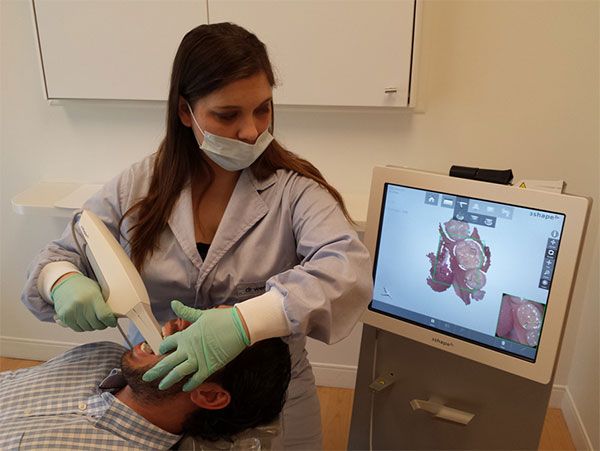Whether regarding the markets hottest smartphone or something bigger, most owners of new technology will start out by critically scrutinizing their new piece of equipment. And Doctors just setting off with the TRIOS Digital Impression solution are no exception. Some say that the first 100 days is the perfect span of time needed in order to judge a sophisticated product. 100 days is not long enough to forget the learning stage, yet it is long enough to form a qualified opinion about functionality, usability, and results. The 100-day user will always be special – so we went out and found one for TRIOS – and asked for her verdict.
Dr. Wendy AuClair Clark is a practicing prosthodontist at Goldstein, Garber & Salama, which is located in Atlanta, GA. This practice, sometimes known as “Team Atlanta Esthetic Dentistry”, has been a leader in smile design for more than three decades. When the decision came to implement the 3Shape TRIOS into the practice, Dr. Clark was very excited to be using a new intra-oral scanner. She had had previous experience using other digital impression scanners in the past and was eager to learn how TRIOS would differ – and if she would even use it.

How was your experience getting started with the 3Shape TRIOS solution?
Both the setup and the training was a very easy and simple process. The system expert got us started. He did the installation the first day, which was setting it up with our network and setting up the connection with our labs. The second day was for training. We worked with TRIOS – the interface, turning it on, adding users, checking cases, and scanning methods. He then followed up with us a month later, which worked perfectly.
How do you like using TRIOS?
I have experience using other scanners but using TRIOS has been refreshing. I appreciate that the scanning is continuous, that I just have to click one button and start scanning, which makes it quick. I also like that the colors of the scans are so natural and that the tip is heated. This helps keep me from having to blow as much air into the patient's mouth – which is crucial when it comes to patient sensitivity. I actually have had a patient for a few years now who has dreaded taking traditional impressions because of his gag-reflex. I've even had difficulty scanning him with other scanners before – because I couldn't stop the scanning. However, with TRIOS I can stop, let the patient relax and then re-start the scan when he is ready. He is definitely a big fan of TRIOS.
Has your doctor-patient experience changed since using TRIOS?
The patients have been very impressed and appreciate the fact that we implement new technology into our practice. They also like seeing the images from the scan. Eventually, I will connect the TRIOS solution with an iPad and use it for patient education as well.
Has the communication improved between you and your labs?
I can keep in touch with my labs much better and follow up on my cases faster, which has reduced the total time for treatments. I appreciated being able to get in touch with my lab when they were having trouble reading the margin line. I was able to easily reset the margin line, and the crown came back in perfect form. I didn't have this option with any of my previous scanners.
What kinds of cases are you mostly using the TRIOS for?
Originally I was using it primarily for crowns, including screw-retained. However, now I am mainly doing implant cases (milled abutments). Being able to use the same workflow for the scanning has made the transition into implant cases seamless.